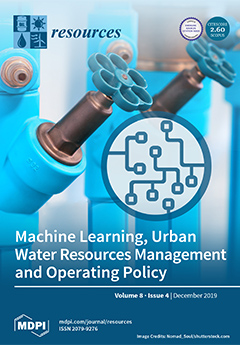Total soil carbon (TSC) is a composite (total) stock, which is the sum of soil organic carbon (SOC) and soil inorganic carbon (SIC). Total soil carbon, and its individual two components, are all important criteria for assessing ecosytems services (ES) and for achieving United Nations (UN) Sustainable Development Goals (SDGs). The objective of this study was to assess the value of TSC stocks, based on the concept of the avoided social cost of carbon dioxide emissions, for the contiguous United States (U.S.) by soil order, soil depth (0–20, 20–100, 100–200 cm), land resource region (LRR), state, and region using information from the State Soil Geographic (STATSGO) database. The total calculated monetary value for TSC storage in the contiguous U.S. was between $8.13T (i.e., $8.13 trillion U.S. dollars, where T = trillion = 10
12) and $37.5T, with a midpoint value of $21.1T. Soil orders with the highest TSC storage midpoint values were Mollisols ($7.78T) and Aridisols ($2.49T). Based on area, however, the soil orders with highest midpoint TSC values were Histosols ($21.95 m
−2) and Vertisols ($5.84 m
−2). Soil depth was important, with the highest values of TSC storage being found in the interval 20–100 cm ($9.87T—total midpoint value, and $1.34 m
−2—midpoint area density). The soil depth interval 0–20 cm had the lowest TSC storage ($4.30T) and lowest area-density ($0.58 m
−2) value, which exemplifies the prominence of TSC in the deeper subsurface layers of soil. The LRRs with the highest midpoint TSC storage values were: M—Central Feed Grains and Livestock Region ($2.82T) and D—Western Range and Irrigated Region ($2.64T), whereas on an area basis the LRRs with the highest values were I—Southwest Plateaus and Plains Range and Cotton Region ($6.90 m
−2) and J—Southwestern Prairies Cotton and Forage Region ($6.38 m
−2). Among the U.S. states, the highest midpoint TSC storage values were Texas ($4.03T) and Minnesota ($1.29T), while based on area this order was reversed (i.e., Minnesota: $6.16 m
−2; Texas: $6.10 m
−2). Comprehensive assessment of regulating ES requires TSC, which is an important measure in achieving the UN SDGs. Despite the known shortcomings of soil databases, such as their static nature and the wide ranges of uncertainty reported for various soil properties, they provide the most comprehensive information available at this time for making systematic assessments of ecosystem services at large spatial scales.
Full article





